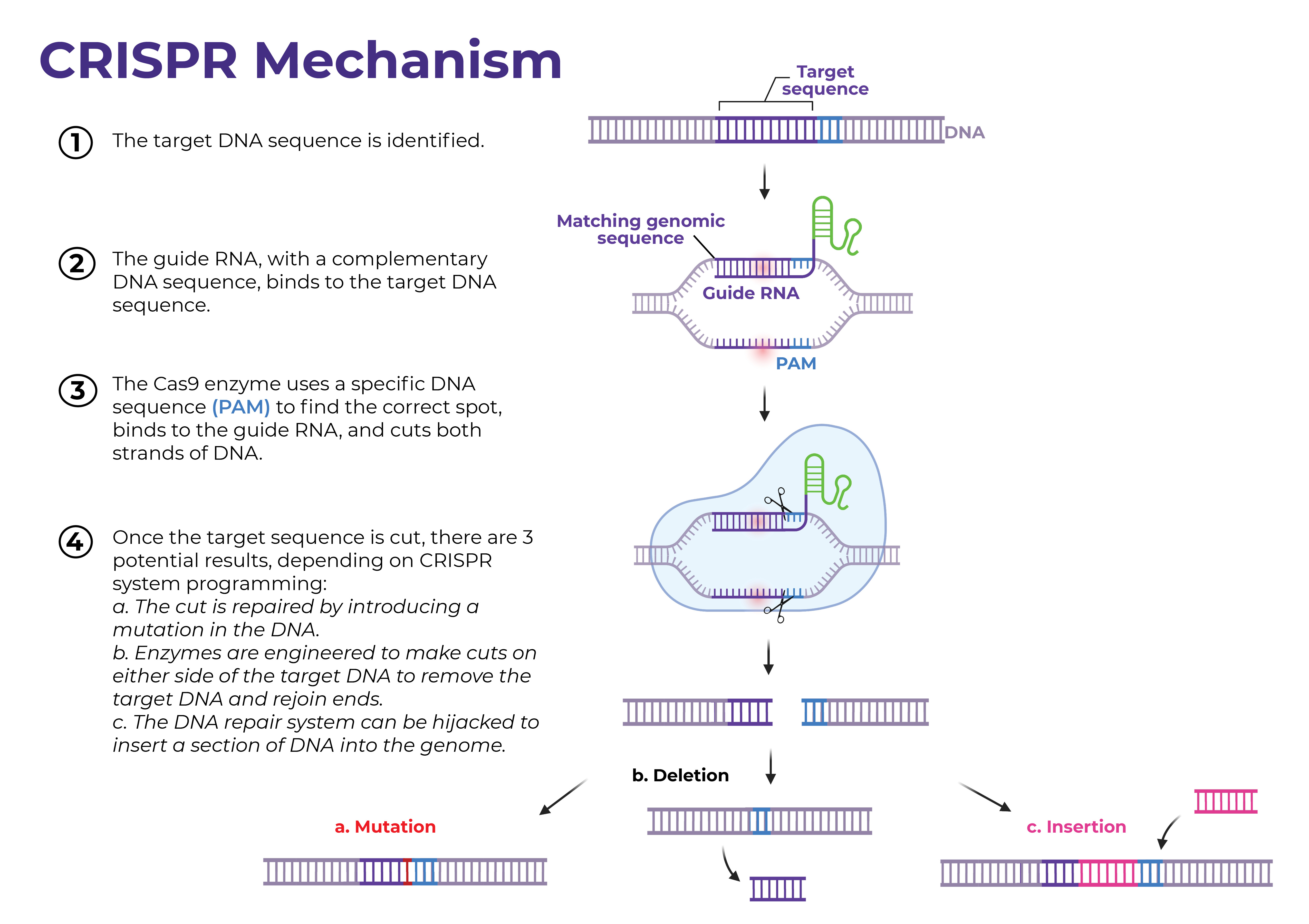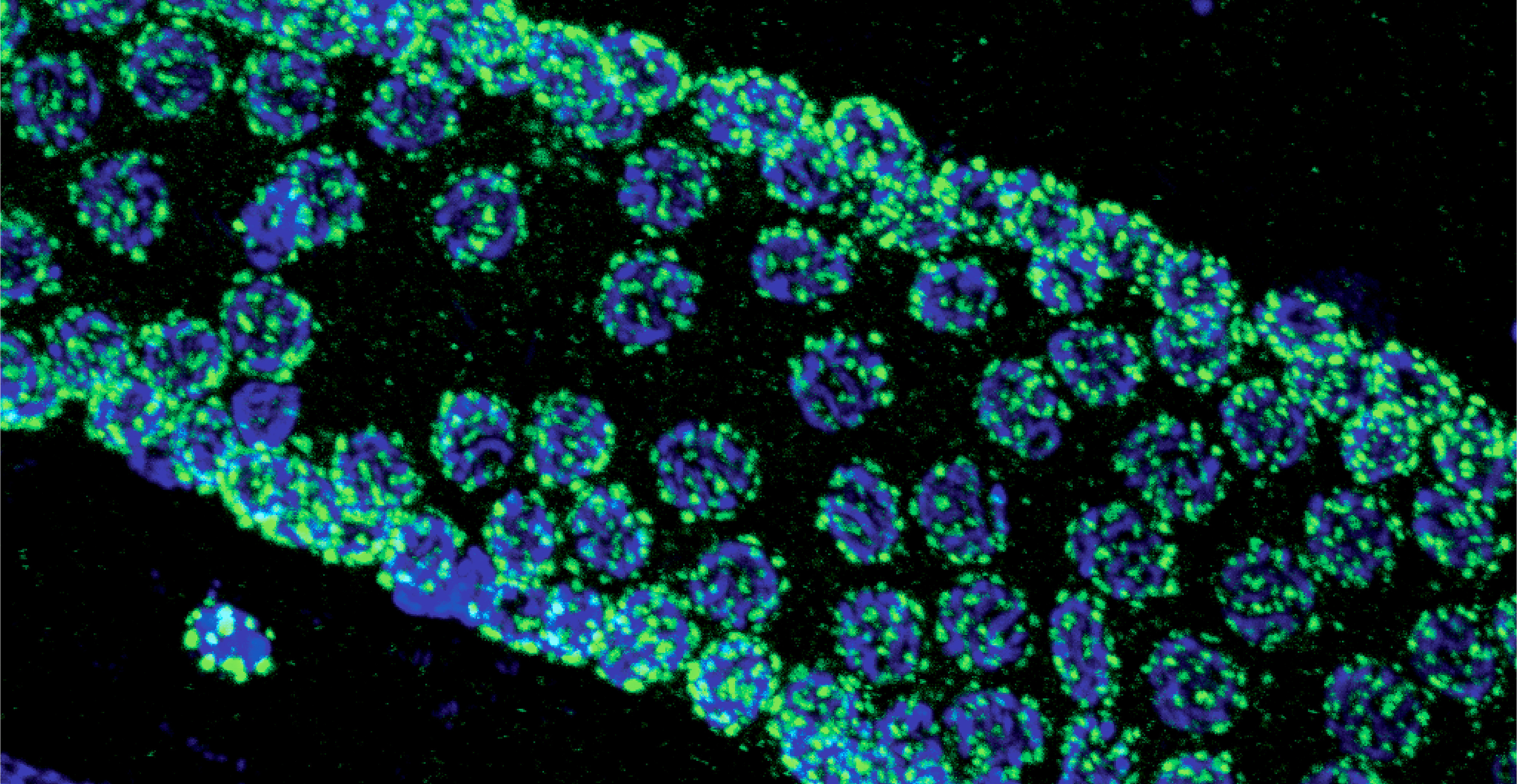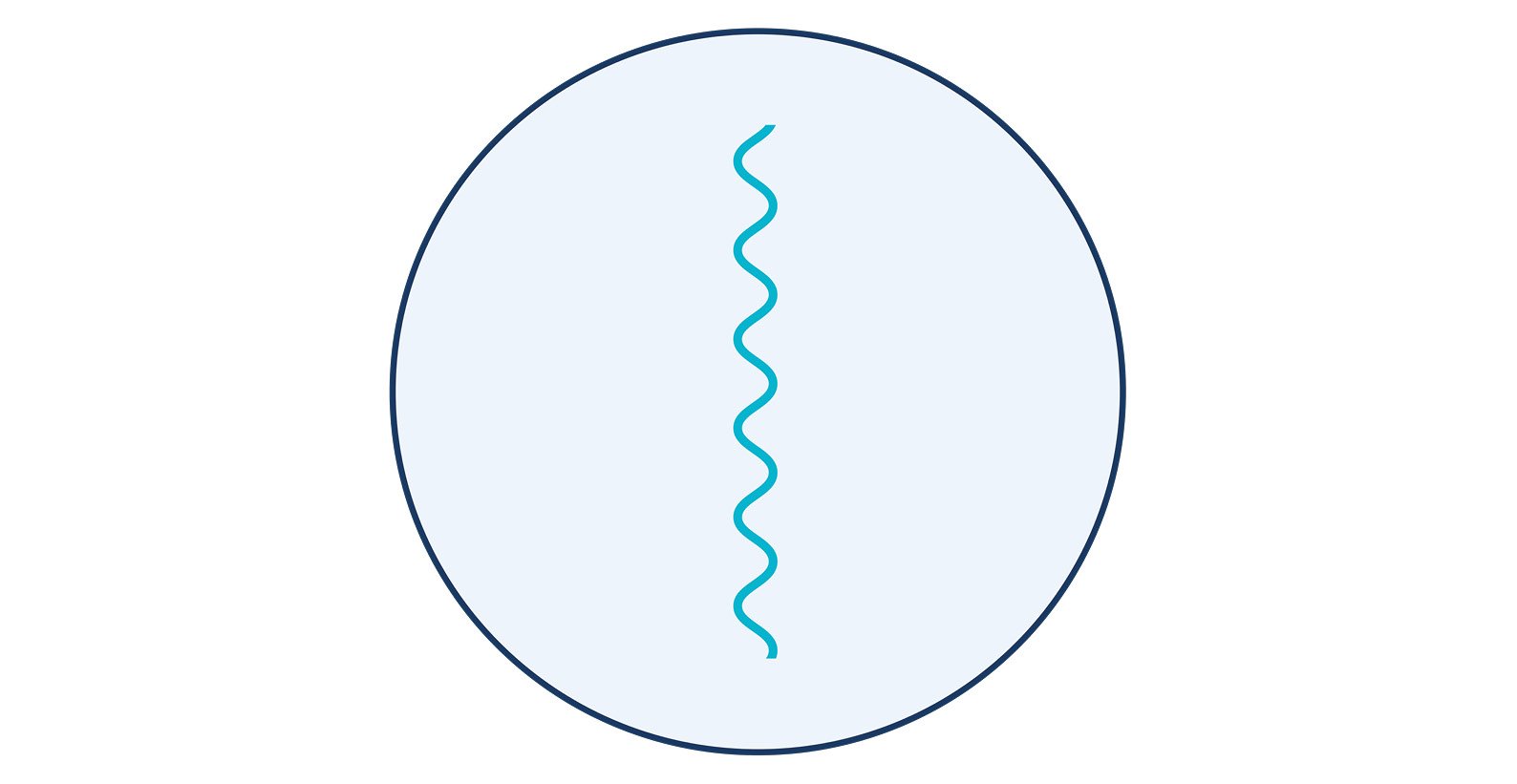
CRISPR stands for Clustered Regularly Interspaced Palindromic Repeats, but don't let the long name confuse you. Originally, CRISPR was discovered as a bacterial defense system against viruses; when bacteria manage to kill off a viral invader, other proteins (enzymes) scoop up the remains of the virus’s genetic code and cut it into tiny bits. These fragments are stored in CRISPR spaces in the bacterium’s own genome. The bacterium will then use that genetic information to fend off future attacks from viral invaders. Scientists can use this CRISPR system, which consists of a genetic search engine (guide RNAs) and an enzyme (Cas9) that acts as a pair of molecular scissors, to edit the genome.
Similar to the discovery made by Andrew Fire and the RTI’s Craig Mello of how RNA interference (RNAi) to finds and regulates specific genes, CRISPR also works like a search engine and similar to RNAi, scientists can harness it to carry out their own searches. In another words, CRISPR acts like the cell’s own personal google search for genetic data.
Think of a library filled with billions of books. This library represents just one person’s DNA. Just one page, in one book, in that library contains the genetic defects causing disease. Say you want to find the play that has the written line “to be or not to be,” but you don’t have any further information. CRISPR has a guide or search engine capability that enables you to find Hamlet by searching for that one phrase in those billions of books.
Once CRISPR finds the specific genetic data, it can edit this genetic information on a molecular level. The difference between these two mechanisms is what they do once the correct genetic sequence is found. RNAi silences genes, while CRISPR can either delete or edit genetic sequences.
This phenomenon of guided searches has led to this very powerful tool, CRISPR. Using the CRISPR system, it allows scientists to search for a specific genetic sequence inside of a cell. Using this guided search, we can precisely find a defective piece of genetic information and it allows us to genetically modify that information at its source. CRISPR could be considered the genetic equivalent of Microsoft Word, and we are beginning to edit DNA almost as easily as software engineers modify code.
For example, sticking to this Shakespeare example, there is some defective “code” in the text (Do be do be do). CRISPR searches for the defective "code" (in cells it would be DNA), cut it out, and paste the correct "code" (To be or not to be) in that location. Technology like RNAi and CRISPR open up a world of possibilities to "fix" defective code within our genomes.
To edit a genome using the CRISPR-Cas9 genetic scissors, first the DNA sequence is identified that is to be edited. Once identified, a single guide RNA (sgRNA) is designed to find and bind to the specific sequence in the DNA. The guide RNA has a sequence that is complementary to those of the target DNA. This means that, at least in theory, the guide RNA will only bind to the target DNA sequence and no other regions of the genome.
The Cas9 enzyme (molecular scissor protein) forms a complex with the sgRNA, and directs the scissors to the precise location in the genome where the cut will be made.
After cutting the DNA in a specific place, the cell will naturally repair the cut. This repair process can be manipulated to make changes (or ‘edits’) to the DNA in that location in the genome. For example, a gene can be deleted or modified to correct any mistakes in its sequence.


RNA interference (RNAi) is a natural process where small pieces of RNA can shut down protein translation by binding to the messenger RNAs that code for those proteins. Learn more about RNAi and how it's like the cell's own google search.

Learn more on how we develop therapeutics by harnessing the flow of genetic information (i.e. RNA or DNA) to treat the root cause of disease.
